Gara Centrale București
The never-built Bucharest Central Station
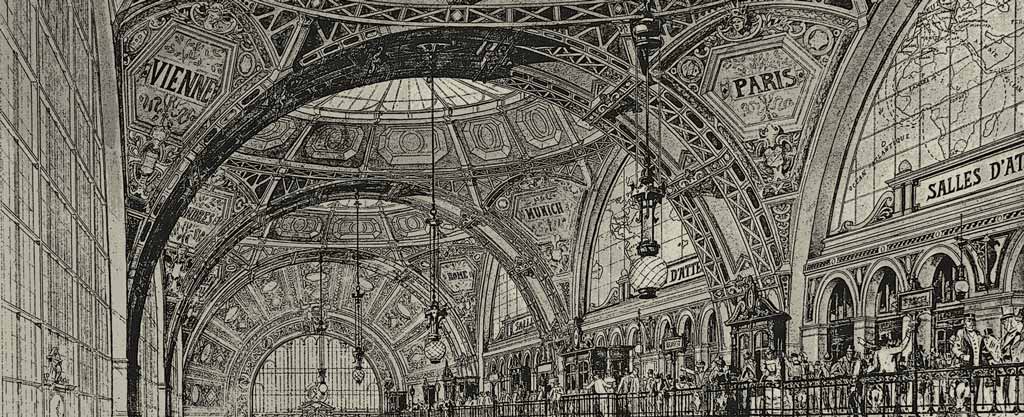
From 1883 the Orient Express connected Western Europe to the Romanian capital of Bucharest. The city did not yet have an appealing, centrally located railway station; instead the Gara de Nord (North Station) of 1872 served as a terminus.
In 1894 French architect Alexandre Marcel won a design contest for a new central railway station.
His spectacular design was never realized, though. A 1911 plan by the Romanian architect Victor Stefanescu came to nothing either.
The North Station was extended step by step and modernized in the 1930s. Bucharest never got a real central station.
Gara de Nord
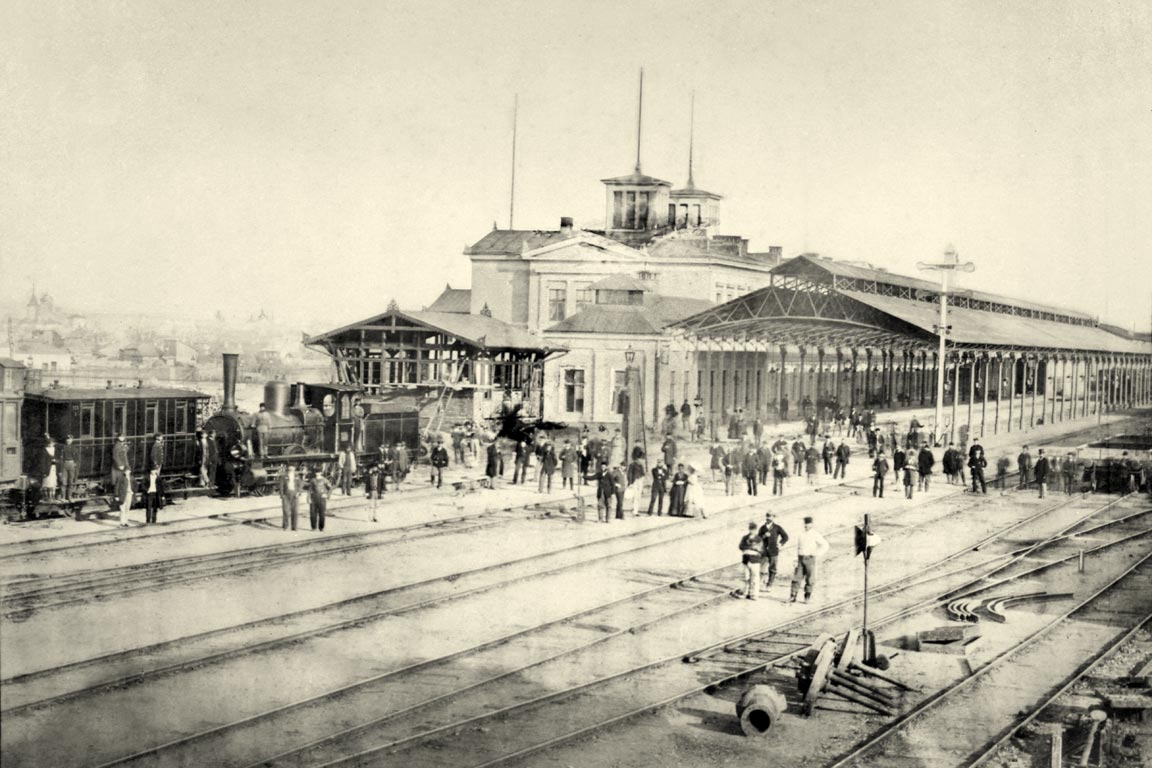
In 1872 the Târgoviştei station opened on the northern edge of Bucharest, soon to be called Gara de Nord. It was the city's second railway station, intended to serve the new Galaţi-Bucharest-Craiova connection. Railway and station were constructed by the German Stroussberg consortium and acquired by the Romanian Railways CFR in 1880.
Initially the station had through tracks, but it was transformed into a terminus with L-shaped buildings in 1878. In its early years the station was located in an open area, but towards the end of the 19th century many buildings arose in its neighbourhood.
Orient Express
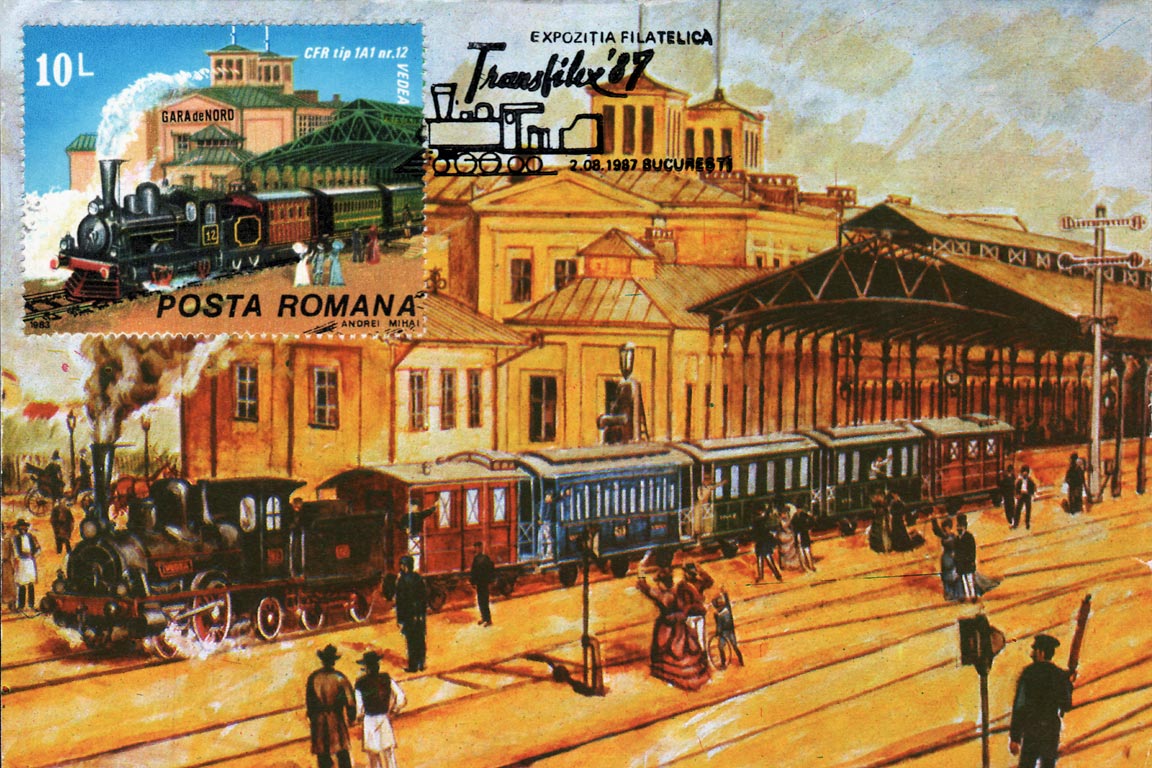
In 1883 the first Orient Express arrived at the Gara de Nord. Bucharest was on the temporary itinerary from Paris to Constantinople. The last stage by steamer across the Black Sea. When the railway line across the Balkans was ready five years later, Romania became a 'side-branch' serviced by the Orient Express once a week.
From 1900 onwards the Orient-Express ran twice a week via Bucharest to Constanța, where passengers could continue by boat to Constantinople. On other days it ran through the Balkans to Constantinople. The sea route via Romania took a day longer than the land route, but was less expensive.
Plans
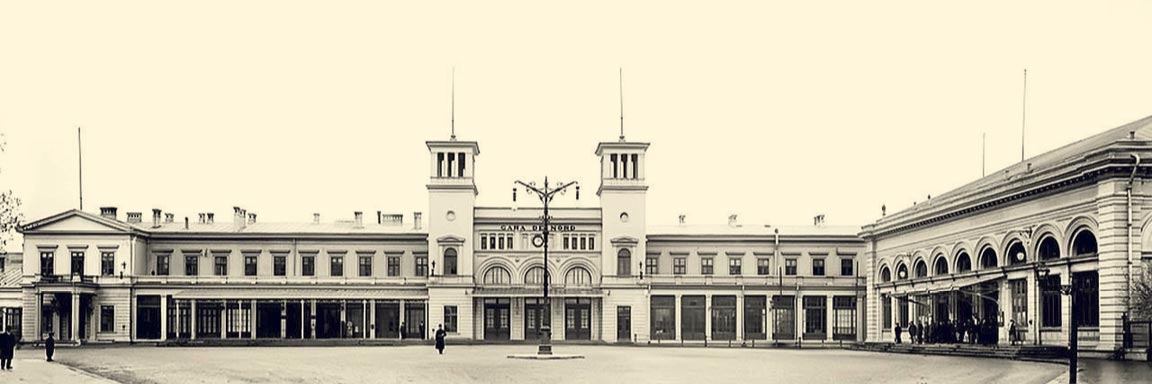
Due to the increasing passenger traffic and the arrival of international trains such as the Orient Express, a larger, centrally located station was first planned around 1890. The envisaged location was one kilometer south of the Gara de Nord along the river Dâmbovița, at the end of the current Strada Ştirbei Vodă.
This open area was the most feasible location for the extension of the railway line, but it was not much better located relative to the central Calea Victoriei street. In 1893 an international design competition was held for the new station with a prize of 10,000 lei.
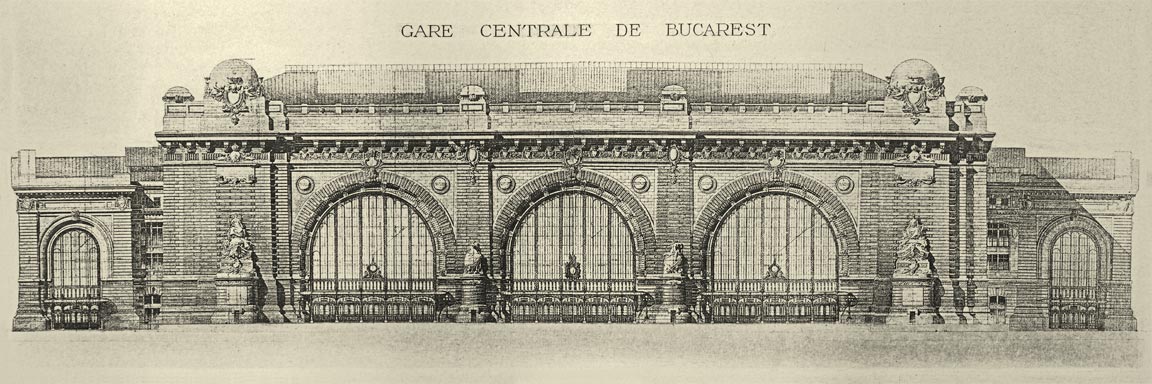
Alexandre Marcel
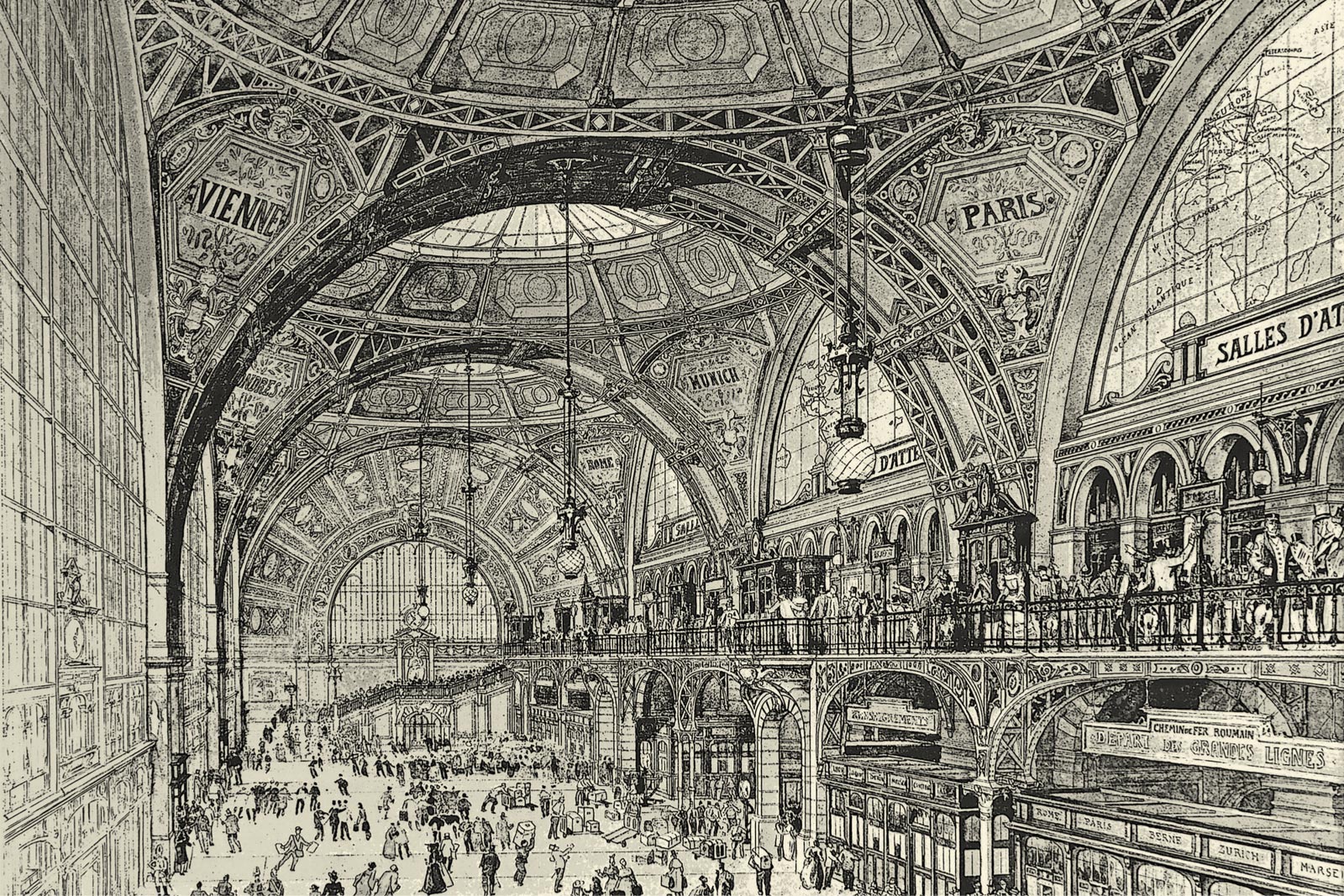
In 1894 the French architect Alexandre Marcel won the design competition for the new central station. Marcel cooperated with the Swiss Louis Blanc, who had studied in Paris but worked in Romania. They designed an enormous station concourse with three imposing domes of glass and steel.
Murals were to show the world map and the cities of London, Paris, Rome, Munich and Vienna. In the end the winning design was not executed because of high costs and difficulties with the expropriation of land. As a temporary solution the North Station was expanded with a ticket hall perpendicular to the old building.

Victor Ștefănescu
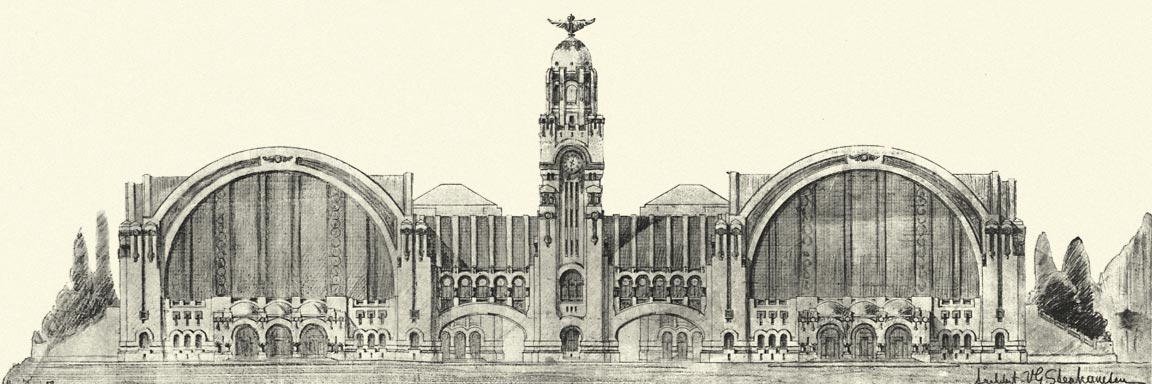
In 1911, when the North Station became congested again, the Romanian architect Victor Ştefănescu created a new design for a central station. Ştefănescu worked in a national revival style, referring to Brâncoveanu, but was also influenced by Art Nouveau.
Stefănescu designed an impressive station façade with a tower between two concourses. The design is reminiscent of two other major stations that were conceived in the same period, but were built only later: the Helsinki railway station by Eliel Saarinen and the Milan central station by Ulisse Stacchini.
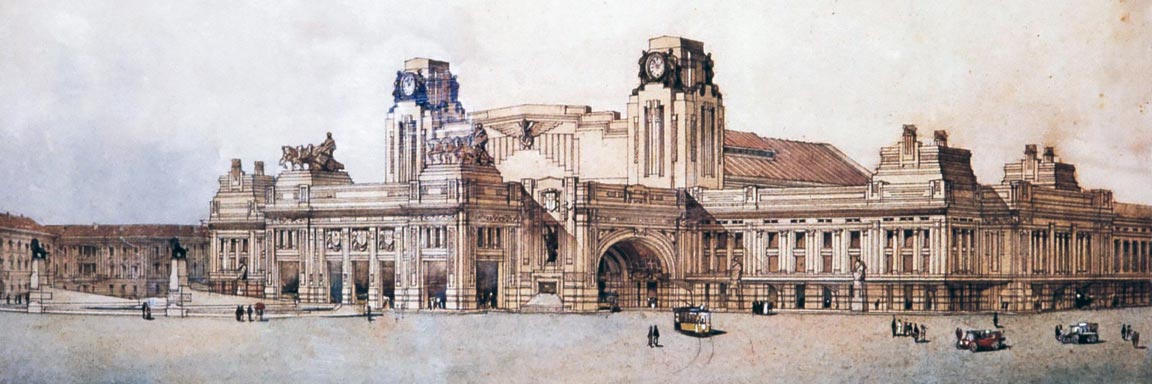
Unexecuted
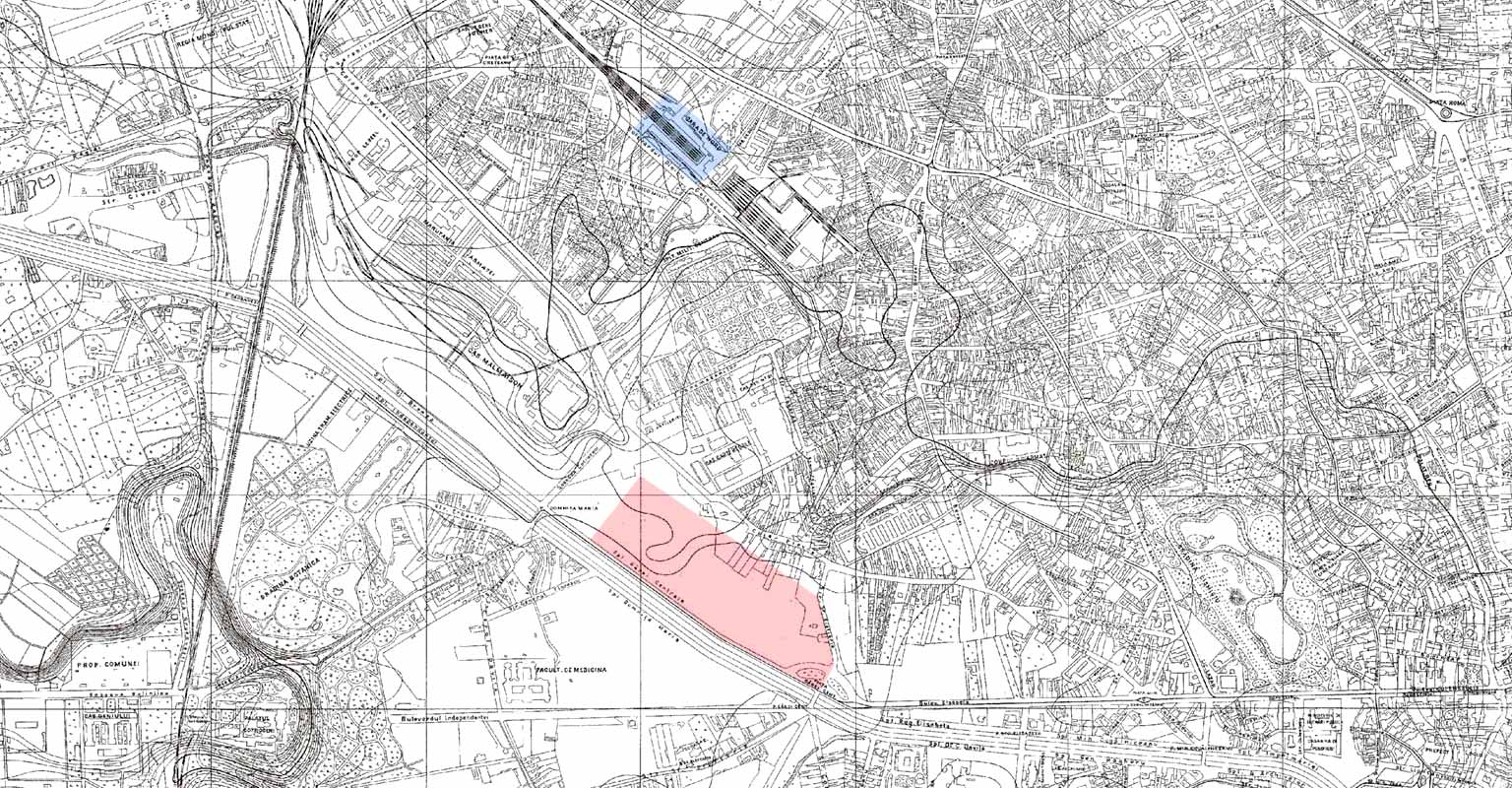
On a 1911 city map, a street and a square at the planned location were already named after the Central Station, but eventually Ştefănescu's design was not executed either — perhaps because of the outbreak of World War I.
After the war the North Station was extended again. On the corner of Calea Grivitei the Sfânta Vineri Church, built in 1854, was demolished; an expansion was built in a rather outdated eclectic style. The number of tracks was also expanded to 10.
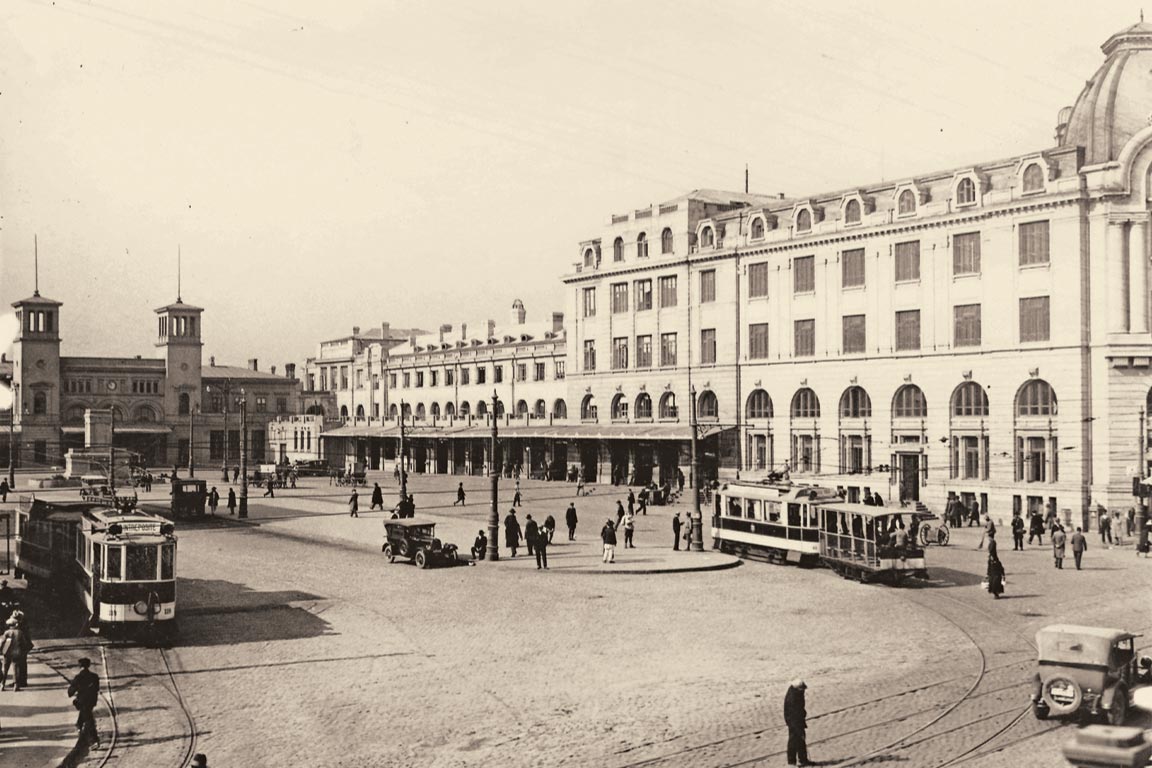
Modernization
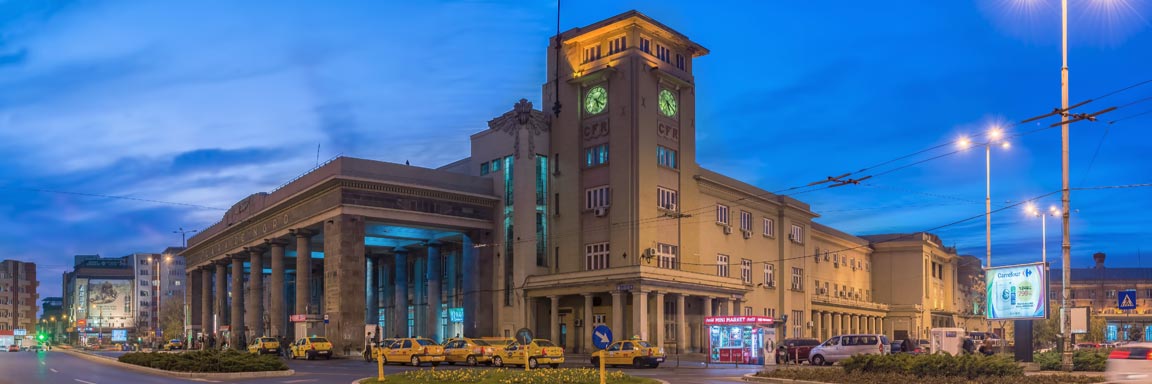
Around 1930 the plan for a new station was finally abandoned and it was decided to modernize the Gara de Nord. This work was assigned to Victor Ştefănescu, who had designed a central station 20 years earlier. Meanwhile his style had become more linear; a mixture of Neoclassicism and Art Deco.
On the short side of the station he added a monumental colonnade. In an attempt to unify the various parts of the building he stripped the tops of the two original 1872 towers and modernized the old facade. With the completion of these alterations in 1934 the station obtained its current, slightly forbidding appearance.
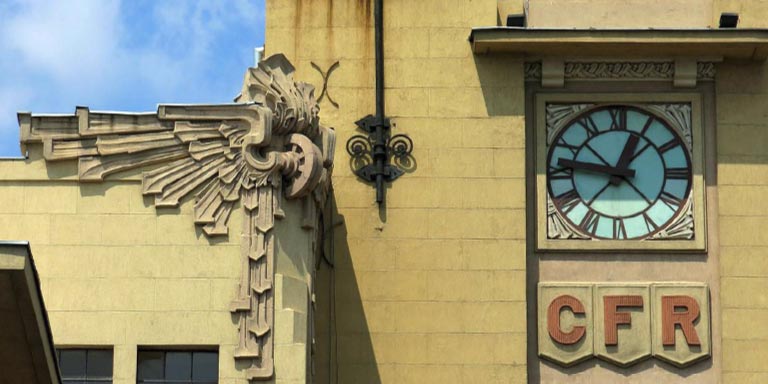
Post-war
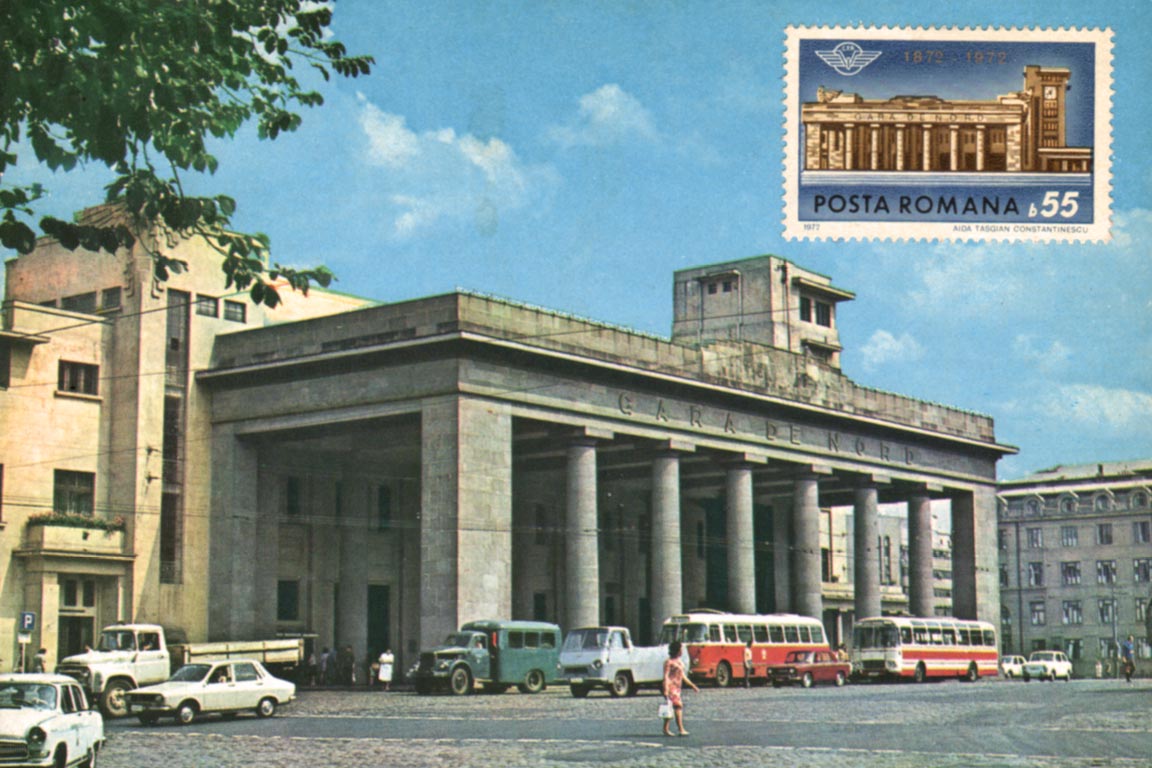
The Gara de Nord largely survived the Allied bombing of Bucharest in 1944. During the communist era the building lost much of its luster. In 1959 the nearby Basarab station was opened to take over local train services from the North Station. Ten years later the railway lines were electrified.
After the opening of the Bucharest metro in 1988 the dictatorial leader Ceausescu planned to demolish the North Station in favor of a new station outside the city, connected by metro. His fall in 1989 prevented this. The Gara de Nord is now a listed building that has undergone several refurbishings.
